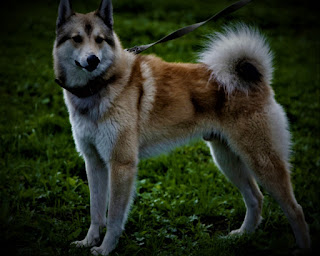West Siberian Laika, Husky
history
West Siberian huskies are the most numerous of the 4 species
of barks that exist today. The other three are:
- Karlo-Finnish husky;
- Russian-European huskies;
- East Siberian husky.
West Siberian huskies are considered native dogs, long
living in the northern regions of Russia, mainly in Siberia. They lived and
roamed with the peoples of the north thousands of years ago, moreover, even
today many tribes still keep these dogs as universal companions.
Although, Western Siberian huskies are used as sled
dogs, however, in their original form it is universal human assistants,
performing a variety of functions. It is believed that these breeds are very
close to their ancestors - wolves. Despite the fact that we mention four
varieties of barks, in fact, these varieties were much more.
When in the early 20th century the tide of commodity
farming, the development of the northern regions, industrialization, began to
displace nomadic tribes, and reduce the population of barks, breeders began to
seriously worry about the preservation of these beautiful animals. After the
Second World War, it was decided to divide all existing varieties into four
main ones, with the aim of further targeted breeding in nurseries. Thus, a
variety of individuals were selected and transported to large dog farms in the
country.
Characteristics of the breed
popularity 01/10
training 08/10
size 06/10
mind 07/10
protection 10/10
Relationships with children 08/10
Dexterity 07/10
Breed information
country | Russia |
lifetime | 10-14 years old |
height | Males: 55-62 |
weight | Males: 18-23 |
Longwool | Average |
Color | gray, white, pale red |
description
These are large dogs, with a muscular, athletic physique. The
outlines of the body are almost square, the muzzle is a little elongated, and the
ears are standing. The limbs are of medium length, and the tail is draped over top
and twisted into the ring. There are three most common colors: gray, white, and pale red.
personality
Since the West Siberian husky is an aboriginal breed that
has been growing for thousands of years in almost half-wild conditions, with
people who also led a fairly primitive lifestyle, even today these dogs retain
many primitive features.
First, it is hunting instincts, which are and do not go
anywhere even if the dog lives in the house. Of course, they will not be
expressed so much, but on the street, your pet will definitely try to catch a
squirrel, a bird, and all yard cats for him will be prey. Although he can be
taught to live under the same roof as the cat, they will make friends and
behave decently.
An aggressive attitude toward strangers is not peculiar, only
if the dog does not live in a private house and does not realize its watchdog
functions. If you have a private house, and the dog is often in the yard,
performing the role of a watchdog, on strangers, it will bark, it is undeniable.
However, the dog also always looks at the owner's attitude and changes its
behavior accordingly.
These are very intelligent animals, to say the least. They
understand a person perfectly well, recognize his emotional state, understand the relationship between people, well perceive speech. It is
extremely difficult to endure a long separation from their family and owner,
and for a very long time to get used to the new family. They are extremely
affectionate, kind, and devoted to their people.
They have strong territorial instincts, and if other animals
infiltrate the territory of huskies, war can not be avoided, with all the
ensuing consequences. Especially if it's a dog of the same sex. Children are
well received, but the child should be taught the correct treatment of the pet.
They know how to distinguish between pets and wild animals. If you want to keep
another dog with a husky, you need to raise them together from an early age, as
a mature husky on their territory another dog will not allow it.
If you suppress the animal, forcing it to accept another
dog, it will be perceived as humiliation and personal insult. From such
character will simply break. Only the likes grown together can organize a pack.
Also consider that the West Siberian husky has a high level of energy, and needs
walks, training, mental stimulation, and games that simulate hunting. This is in
the case if you are by nature not a hunter, and the dog is deprived of such
activity in the natural environment.
Also, The West Siberian husky can make digs under the fence,
poorly perceive darkness and cramped spaces (requires training and addiction),
and sometimes can nibble a hole in the fence just to go for a walk. Including -
and the nearest trash can, paradoxically. By the way, some northern peoples,
such as Mansi, allow their huskies from time to time to go to the forest, so to
speak, on their own business.
Common diseases
These are very healthy dogs and rarely get sick.




.jpg)


0 Comments